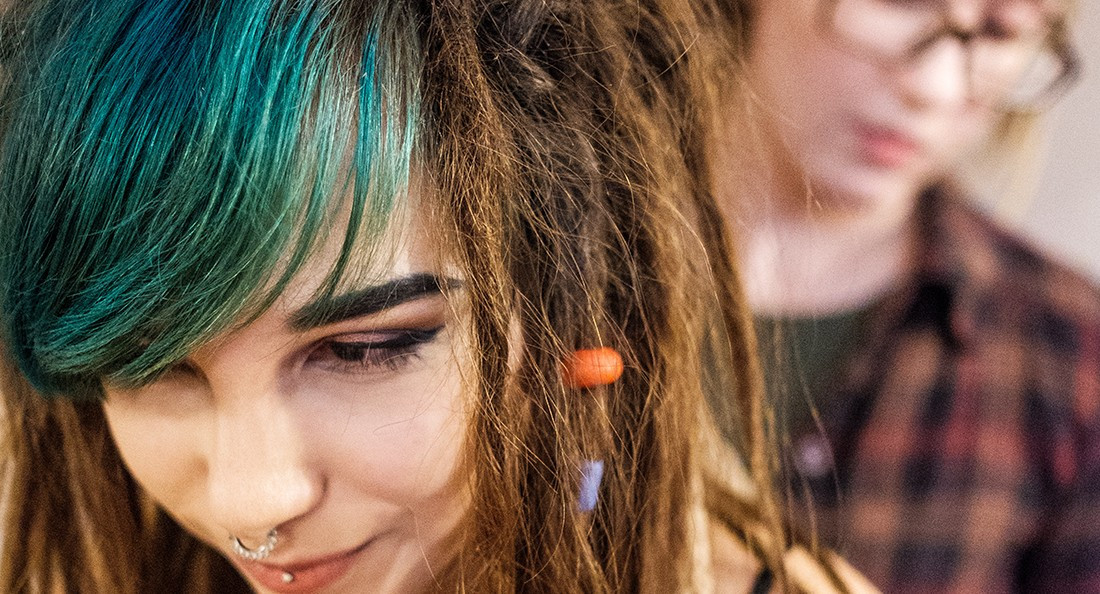Intimate knots
Exploring the art of shibari
Imagine that it is the Japanese Edo period (1615 to 1868), and a group of samurai warriors have just captured a band of outlaws. The outlaws fought with honour, but now it’s time to face justice. Before they can be transported to face trial, the newly captured bandits must be bound.
However, simply tying up the enemy will not suffice. There is an art and intricacy to binding captives that must be observed. Using simple yet visually intricate knot techniques to bind an enemy with a jute or hemp rope known as asanawa is a symbolic display of power. This practice is known as Kinbaku, which means “tight binding” or kinbaku-bi “the beauty of tight binding.”
In the modern era, kinbaku is no longer used to bind one’s enemies. Rather, it has been popularized as a form of sexual bondage or BDSM (an umbrella term that refers to bondage/discipline, domination/submission, and sadism/masochism) often referred to as shibari, which means “to decoratively tie.”
While there is some debate over terms among Western practitioners, generally kinbaku refers to the general art of knot tying, while shibari is used to describe the more specialized practice of sexual bondage. Others suggest that shibari refers to a purely artistic form of tying, and kinbaku describes the artistic, intimate, sexual practice as a whole. Overall, the practice can be as diverse as each practitioner.
A typical setup requires at least two participants. One will take the more dominant role as “Top,” and will tie the ropes, and one will take the submissive “Bottom” role, and be tied up.
Traditional natural fibre rope is still most commonly used, though some may use synthetic materials. Rope thickness is often about 6 mm, though sometimes a thinner 4 mm might be used.
The amount and length of rope used can vary depending on the size of the Bottom, and the type of knots that are tied. A “rig” – an arch-shaped device that allows ropes to be attached to it so the Bottom can be suspended – is another commonly used piece of equipment.
Shibari can be practiced purely as an art form, while some perform shibari for live audiences. More often, shibari involves intimate, sensual and sexual overtones and is practiced in a more private setting. Regardless of the intention of practice, shibari requires a large amount of mutual trust and respect between partners.
Partners who play together often might already know each other’s boundaries and preferences, while partners who have less experience with each other might discuss what they like and don’t like before ever starting a session.
While each session is unique, the Top will often start a session by tying the Bottom in a basic harness that will lay the groundwork for more intricate knots. These basic knots must be tied correctly, as they will play a key role in ensuring that the Bottom remains comfortable throughout a session, especially through the suspension phase.
Moving on from the initial harness knots, the Top can become more creative with the knots they use and will often transition the Bottom into a suspended position.
During suspension, the Bottom’s body can release endorphins – a type of mood hormone that works as a natural painkiller and provides a rush that is commonly known as a “runner’s high.”
Once the Bottom is securely suspended, the Top may continue to tie different variations of knots and move the bottom into different positions, or the session may include other forms of play, such as dripping wax or flogging.
A session usually lasts as long as a Bottom can take. While the Top could be seen as the dominant role, it is up to the Bottom to decide when they are no longer comfortable. They can end a session at any time.
Anyone who wants to learn more about shibari can check out a vast number of online resources, such as fetlife.com (free account required), or check out local events like Rope Bite Winnipeg, a fairly regular event open to anyone over the age of 18.
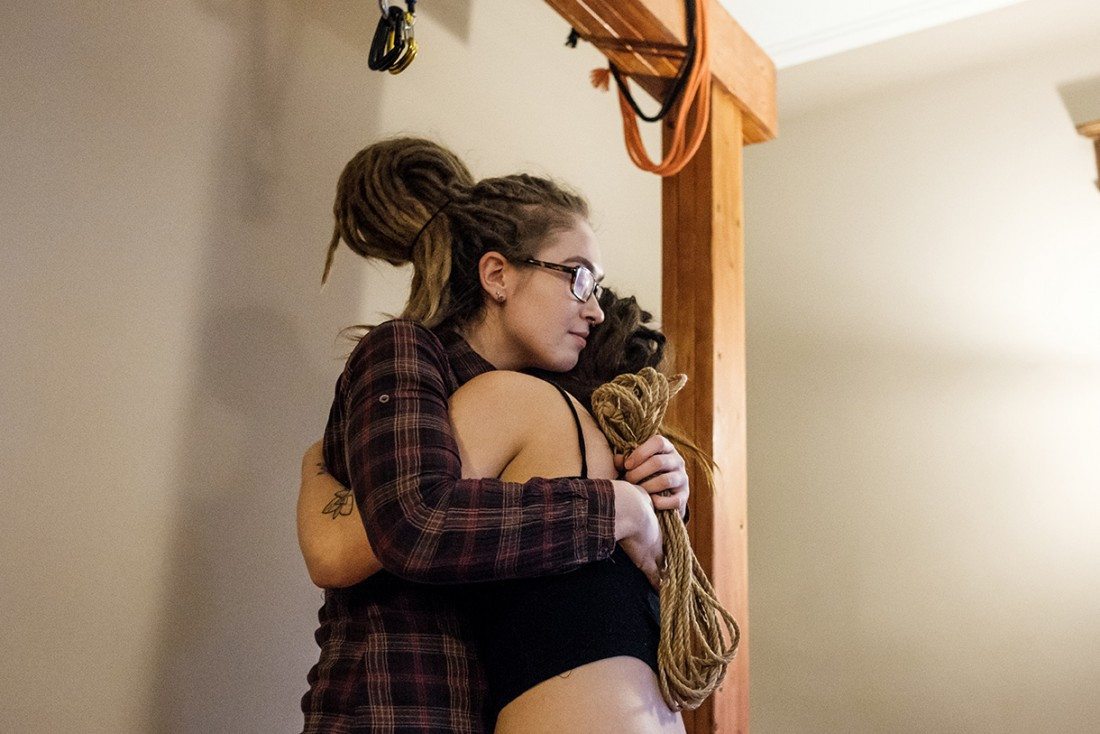
Erin Kiazyk (left) and Emma Bedard begin their shibari session with a hug.
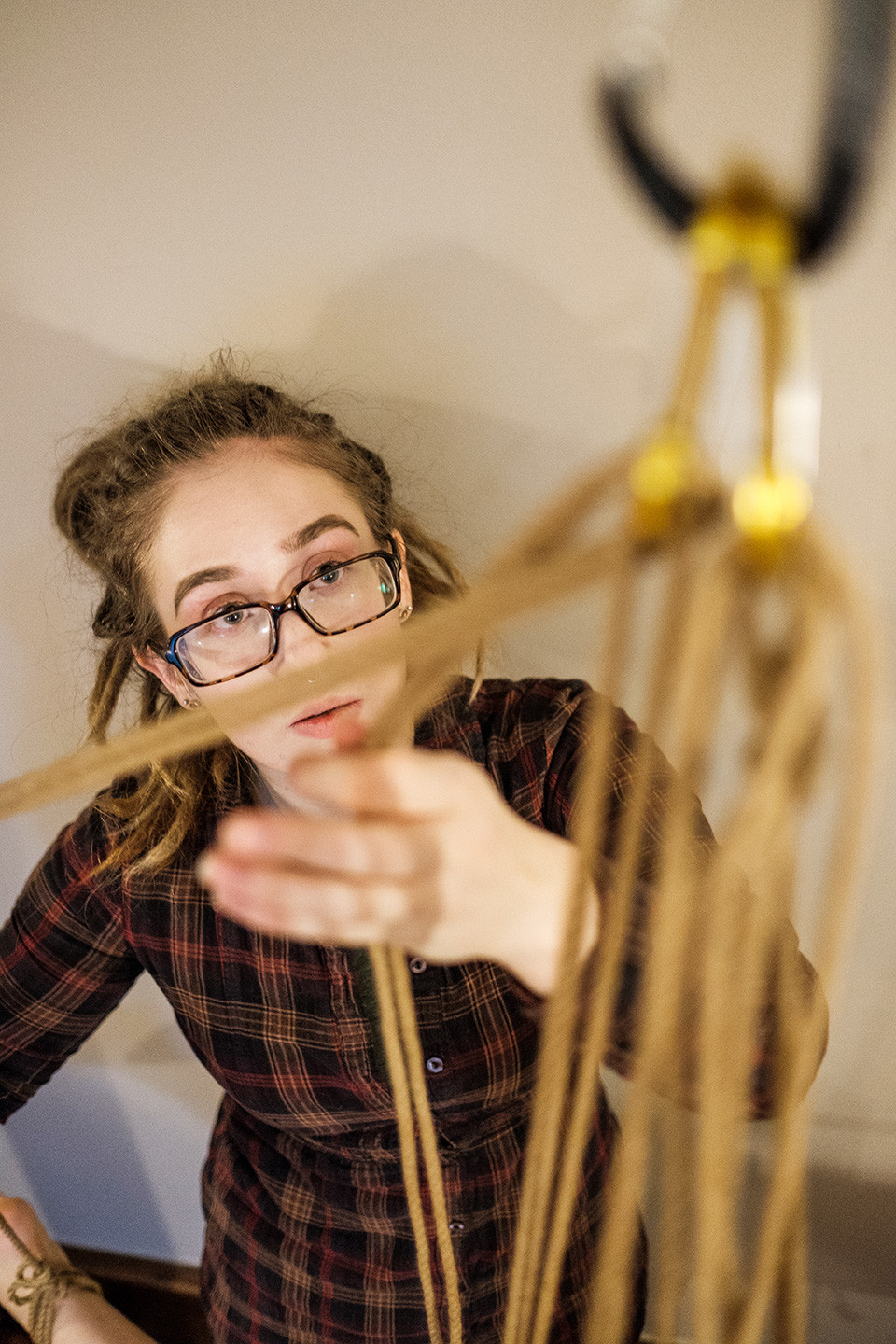
Erin Kiazyk is, what in the world of shibari, is known as a Top. Tops take on a dominant role as the ones in charge of tying the ropes. Kiazyk started as a Bottom, but eventually discovered she prefers tying as a Top.
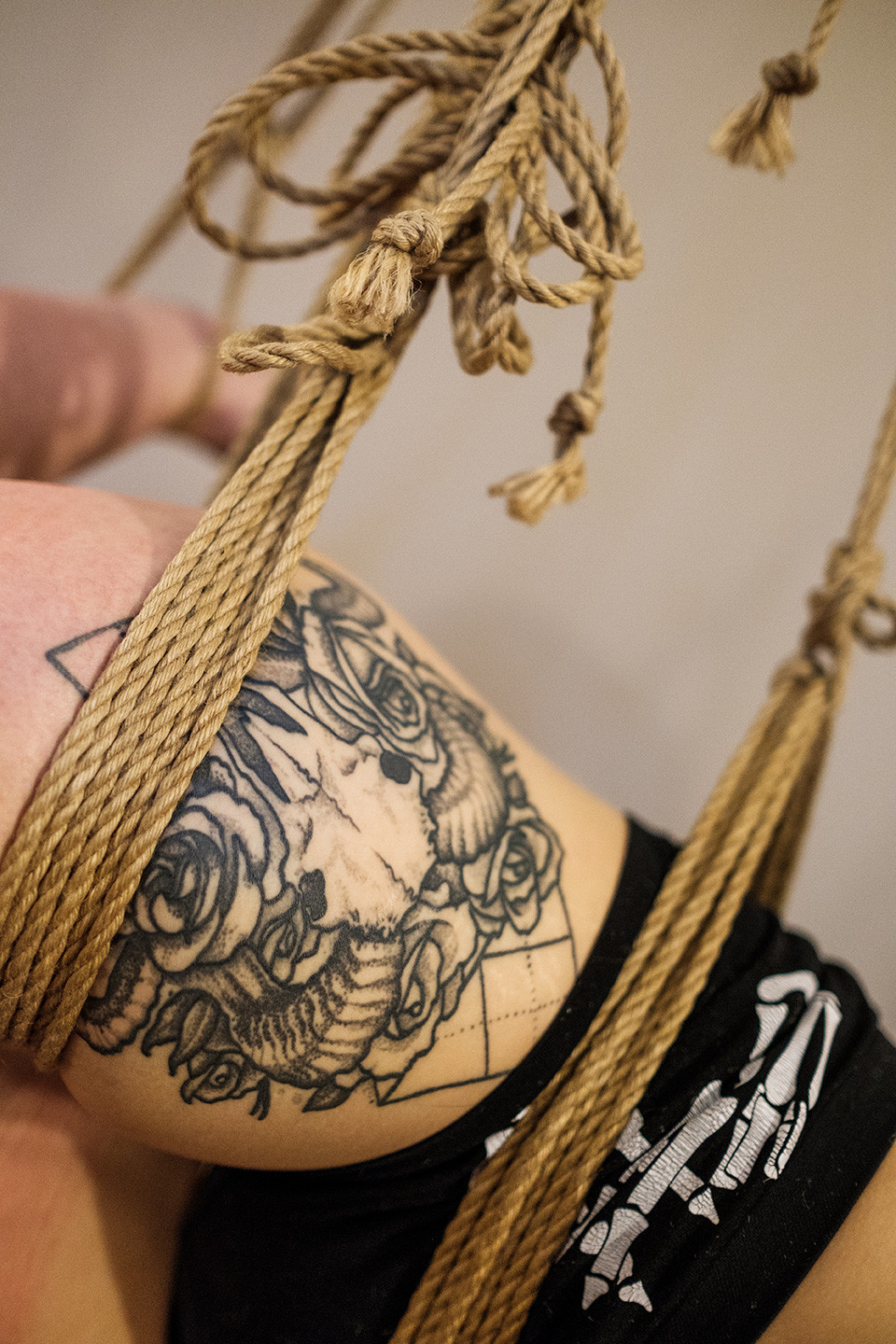
Part of the rope work which suspends Emma Bedard's hips and thighs.
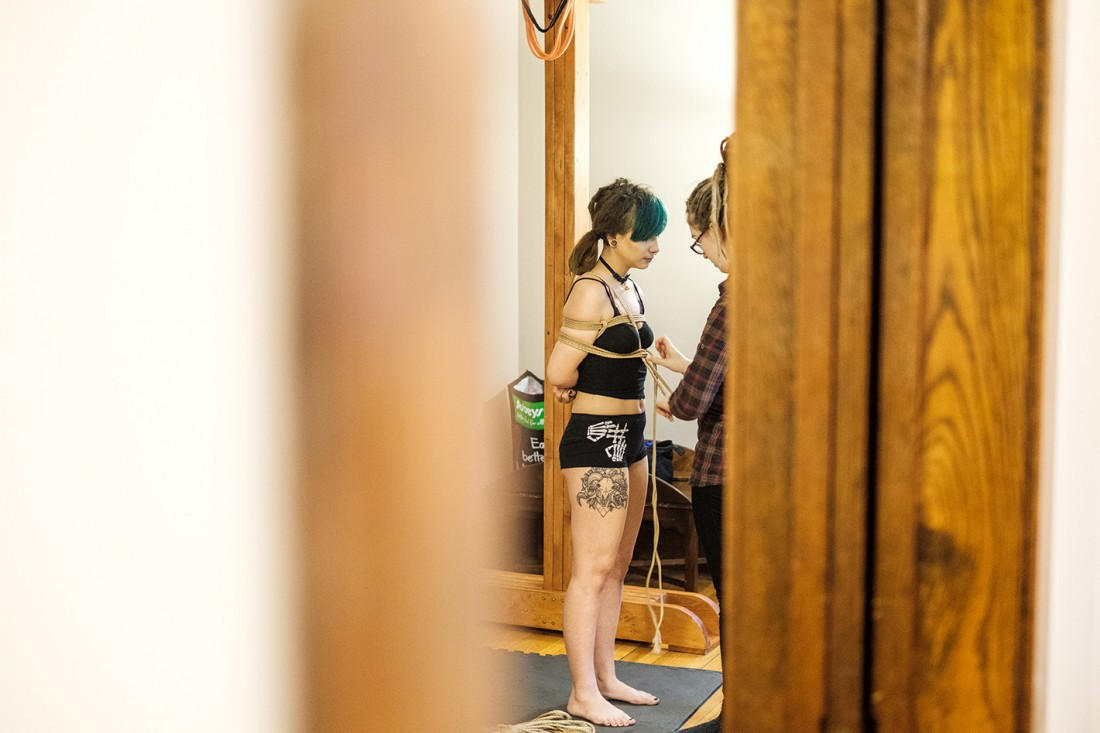
Shibari sessions often start with a basic harness. Tying these simple knots well and correctly is important, as they will be integral in distributing weight and tension evenly during the suspension phase of the session.
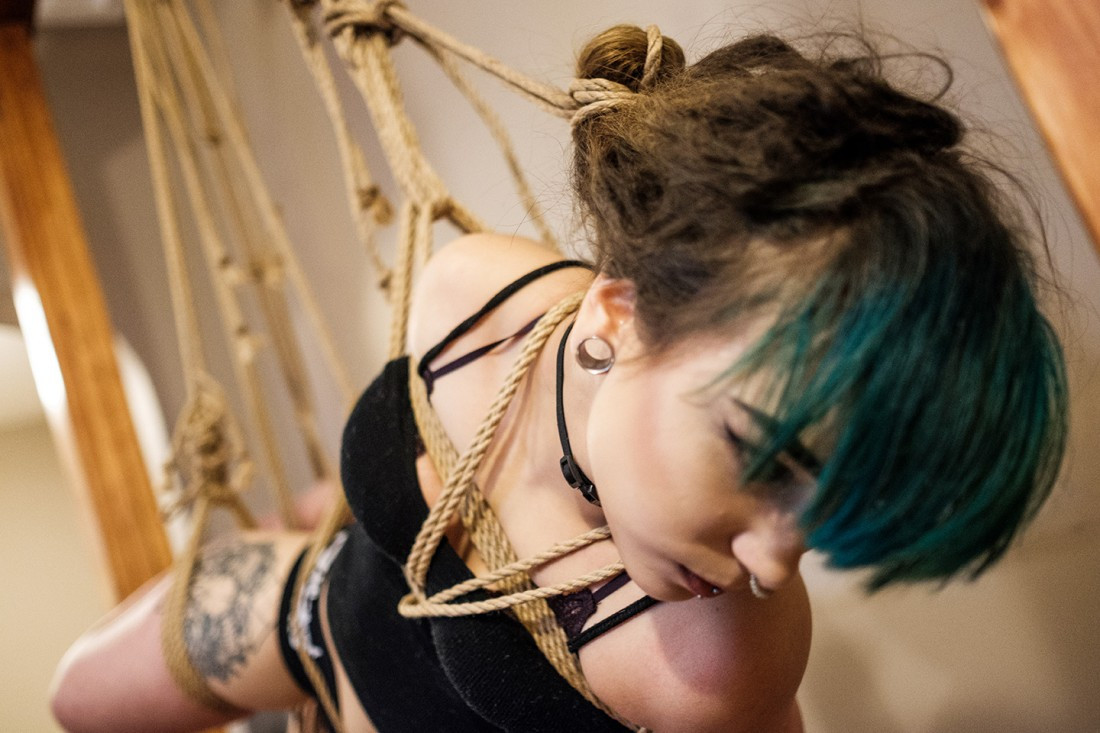
When fully suspended, a shibari participant's body will often release a rush of endorphins.
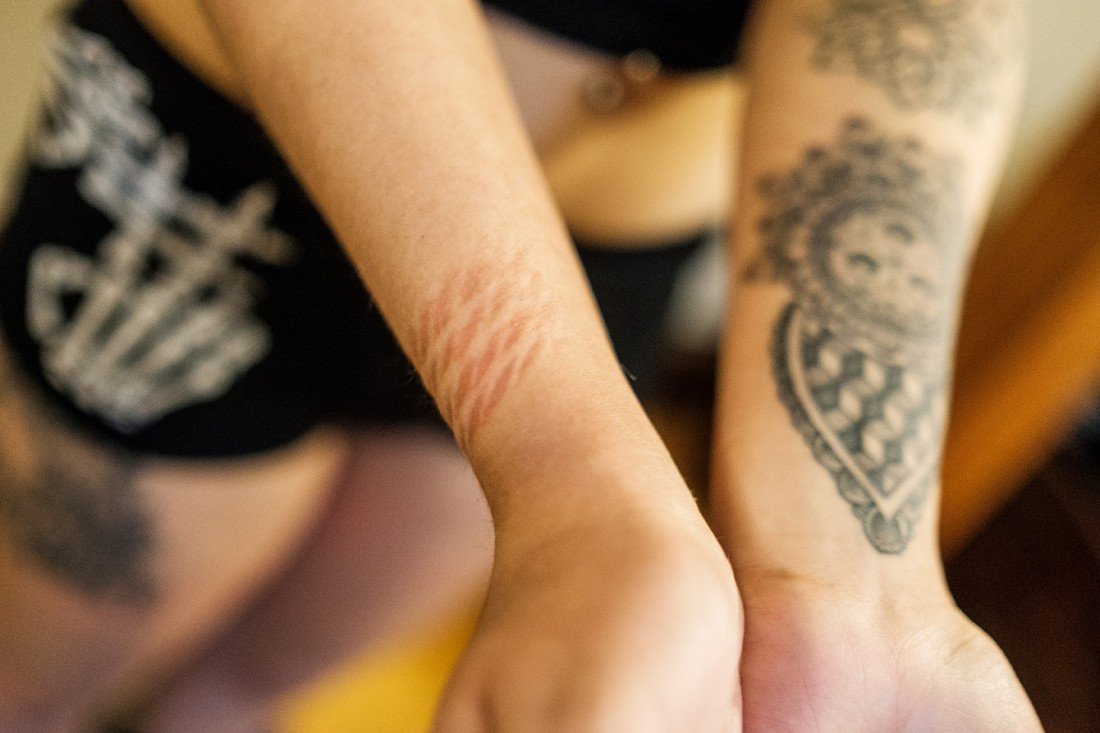
Emma Bedard shows off marks left by rope after her shibari session.
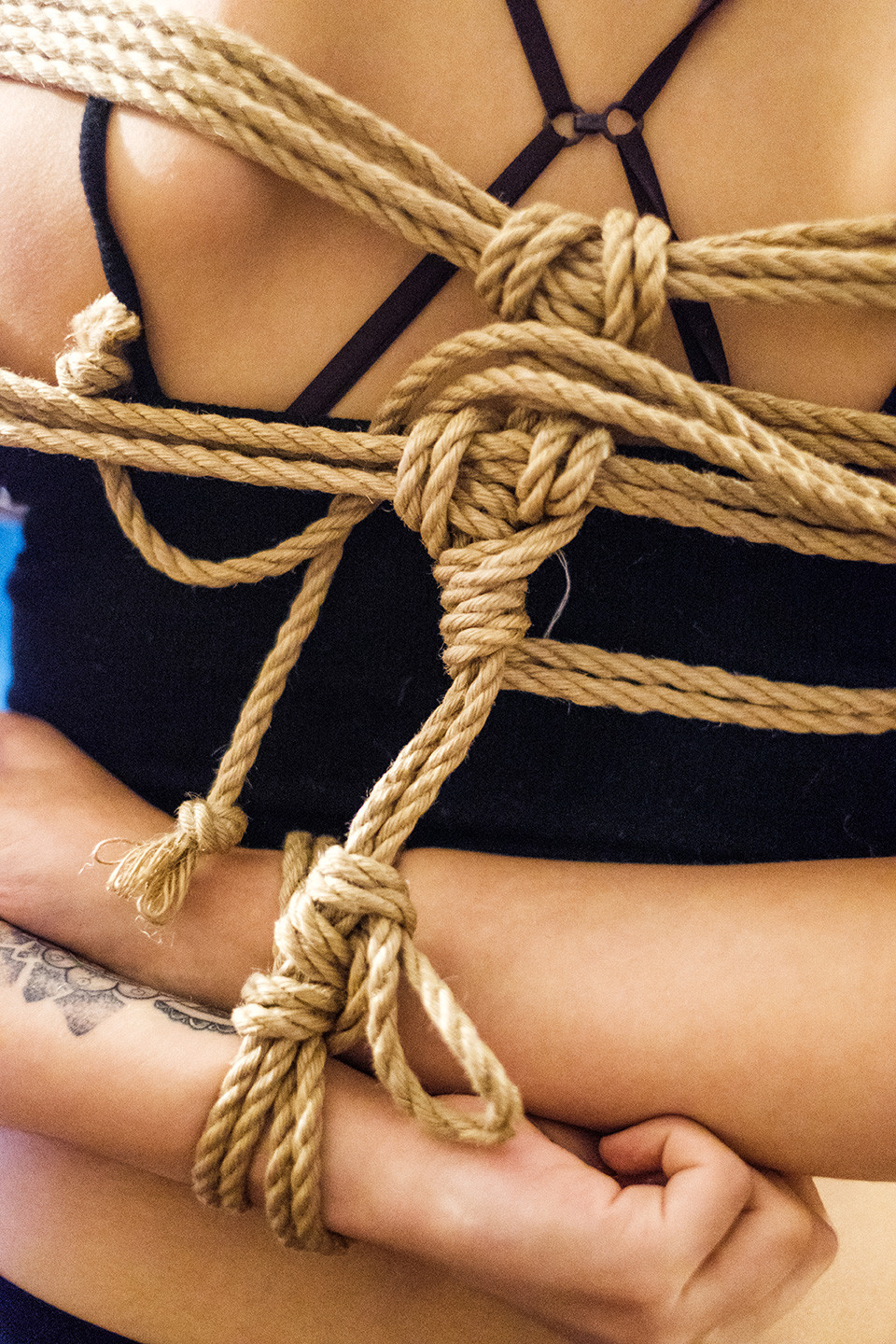
Shibari is a Japanese word that means “tie decoratively.”
Published in Volume 71, Number 25 of The Uniter (March 23, 2017)

